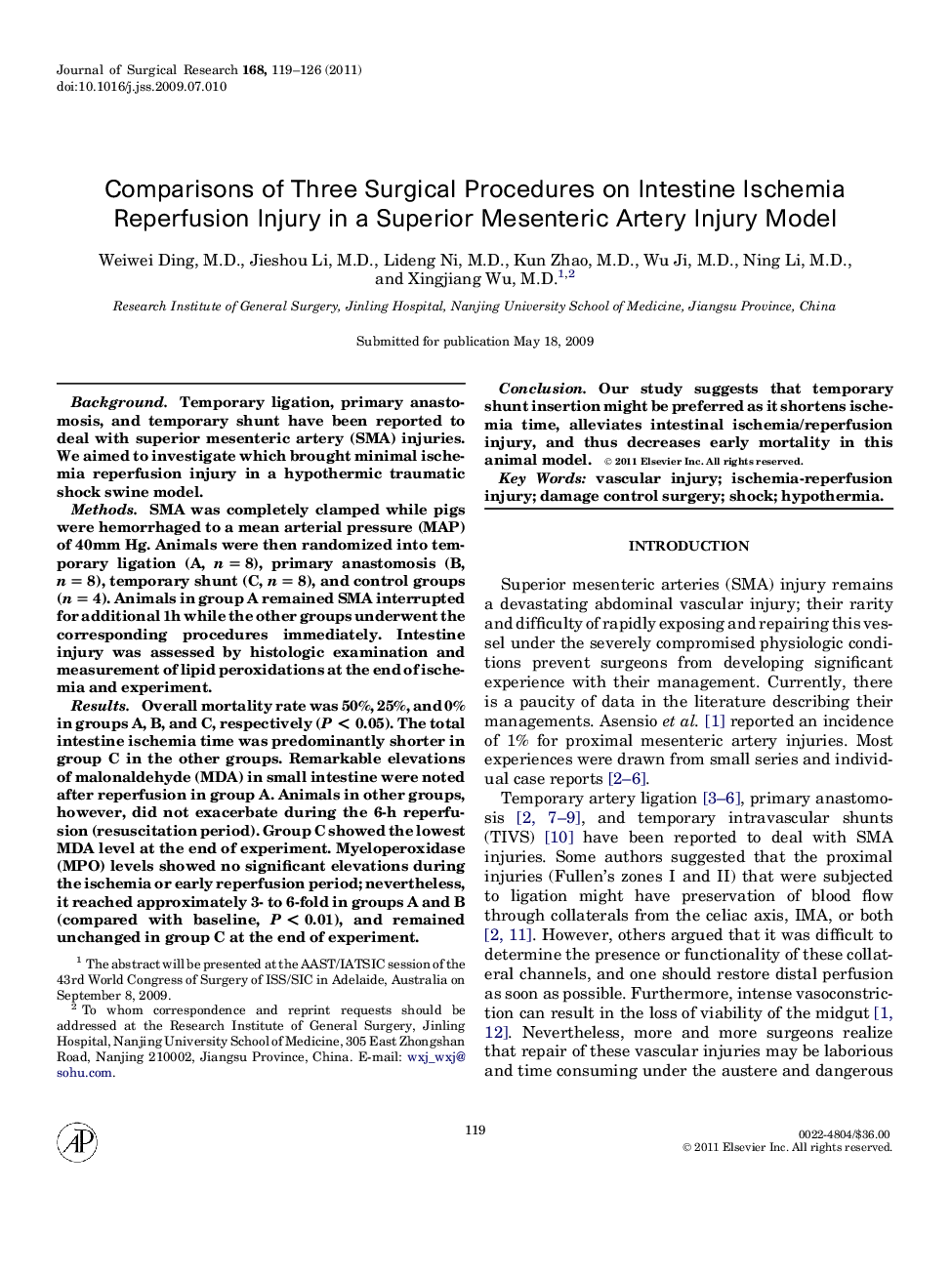| Article ID | Journal | Published Year | Pages | File Type |
|---|---|---|---|---|
| 4302198 | Journal of Surgical Research | 2011 | 8 Pages |
BackgroundTemporary ligation, primary anastomosis, and temporary shunt have been reported to deal with superior mesenteric artery (SMA) injuries. We aimed to investigate which brought minimal ischemia reperfusion injury in a hypothermic traumatic shock swine model.MethodsSMA was completely clamped while pigs were hemorrhaged to a mean arterial pressure (MAP) of 40mm Hg. Animals were then randomized into temporary ligation (A, n = 8), primary anastomosis (B, n = 8), temporary shunt (C, n = 8), and control groups (n = 4). Animals in group A remained SMA interrupted for additional 1h while the other groups underwent the corresponding procedures immediately. Intestine injury was assessed by histologic examination and measurement of lipid peroxidations at the end of ischemia and experiment.ResultsOverall mortality rate was 50%, 25%, and 0% in groups A, B, and C, respectively (P < 0.05). The total intestine ischemia time was predominantly shorter in group C in the other groups. Remarkable elevations of malonaldehyde (MDA) in small intestine were noted after reperfusion in group A. Animals in other groups, however, did not exacerbate during the 6-h reperfusion (resuscitation period). Group C showed the lowest MDA level at the end of experiment. Myeloperoxidase (MPO) levels showed no significant elevations during the ischemia or early reperfusion period; nevertheless, it reached approximately 3- to 6-fold in groups A and B (compared with baseline, P < 0.01), and remained unchanged in group C at the end of experiment.ConclusionOur study suggests that temporary shunt insertion might be preferred as it shortens ischemia time, alleviates intestinal ischemia/reperfusion injury, and thus decreases early mortality in this animal model.
